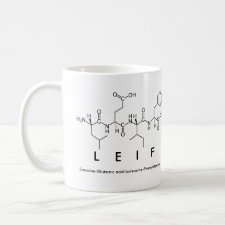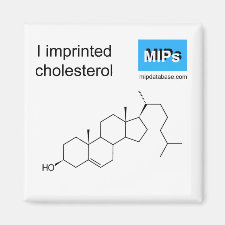
Authors: Piacham T, Ayudhya CIN, Boonpangrak S, Nantasenamat C, Suksrichavalit T, Bülow L, Ye L, Prachayasittikul V
Publication date: 2005
Article title: Molecularly imprinted polymer as a tool for nanobiosensors and enzyme mimics.
Page numbers: Art. No. E0119
Alternative URL: http://www.scisoc.or.th/stt/31/sec_e/paper/stt31_E0119.pdf
Volume number: Proceedings of the 31st Congress on Science and Technology of Thailand at Suranaree University of Technology
Abstract: Molecularly imprinted polymers (MIPs) are synthetic mimics of biological receptors with applications in a plethora of areas in life science. Our present research focuses on the use of imprinted nanostructures prepared by different polymerization methods (such as bulk, precipitation, and surface-bound photo-radical initiator polymerization) for the development of nanobiosensors and enzyme mimics. The work aims to study preparation of thin MIP films on a gold-coated QCM resonator in a well-controlled and reproducible manner. A surface-bound photo-radical initiator was used to furnish an imprinting polymerization in a dilute solution of template, functional monomer and crosslinker. With this approach we were able to control the thickness of the MIP film to be below 50 nm, where the selective recognition of target analytes can be easily detected by the underlying quartz crystal resonator and displayed certain chiral selectivity towards the original template, (S)-propranolol in aqueous solution. Furthermore, we have also developed the cholesterol-imprinted microspheres using precipitation polymerization via a sacrificial covalent bond. In addition to studying metal ion binding polymers, we have been interested in exploiting the resulting polymers for biotechnological applications, as enzyme mimics which able to catalyze important biochemical reactions. Our Mn(II)-containing polymer was designed to mimic the coordination center in the native Mn SOD enzyme. The Mn(II) in the polymer was supposed to coordinate with three imidazole and one carboxyl group to maintain catalytic activity. We used 4-vinylimidazole (4V), 1-vinylimidazole (1V) and methacrylic acid (MAA) to produce the necessary Mn(II) binding interactions, based on the assumption that these monomers have functional groups similar to those of histidine and aspartic acid, the amino acid residues that form the active metal complex with Mn(II) in the native enzyme. This manganese supported polymer displayed favorable SOD activity. Interestingly, upon using different monomers combination, the manganese supported polymer possessed different SOD activity. Furthermore metal center has also play an important role on catalytic activity.
Template and target information: (S)-propranolol, cholesterol
Author keywords: molecular imprinting, thin film, microspheres, quartz crystal microbalance, propranolol, cholesterol



Join the Society for Molecular Imprinting

New items RSS feed
Sign-up for e-mail updates:
Choose between receiving an occasional newsletter or more frequent e-mail alerts.
Click here to go to the sign-up page.
Is your name elemental or peptidic? Enter your name and find out by clicking either of the buttons below!
Other products you may like:
 MIPdatabase
MIPdatabase









